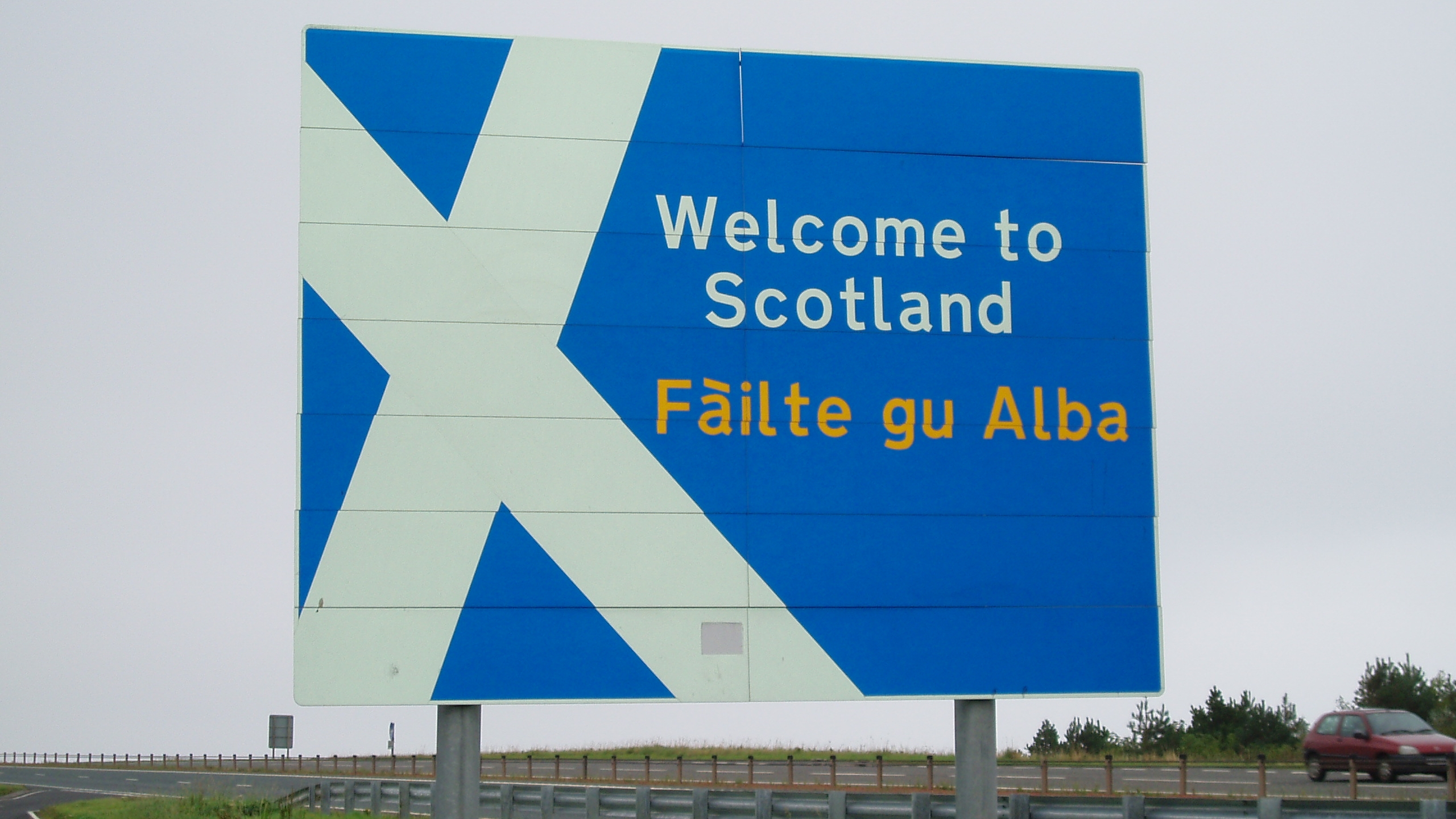It is a truth universally acknowledged by all factions of the Labour Party that we could have done better in Scotland.
It is a truth universally acknowledged by all factions of the Labour Party that we could have done better in Scotland. As Lesley Brennan - co-chair of the Momentum-affiliated group Campaign for Socialism (CfS) - observes in her excellent analysis of turnout and vote share across Scotland compared with the rest of Britain, it is apparent that Scottish Labour did not perform to the same level as the national party. As Brennan points out, “only 24 constituencies [did not see] an increase in Labour voters, and 21 of these were in Scotland”. Proportionally, the overall vote share increase for Labour in Scotland compared to 2015 was only 1%, compared to 38% growth in the rest of the UK.
Now, while these facts are easily acknowledged, the particular reason for this disappointing performance comes down to the divide in the Scottish party. Obviously the Tories did very well in Scotland, but that does not necessarily point exclusively towards the relative lack of Labour gains (with notable exceptions of course). There is a faction which believes that the only reason the Tories succeeded in Scotland is because Labour was not pro-unionist enough, so the hardcore unionist vote went Tory to resist the SNP. The other, contrasting opinion - one which is held by CfS, Scottish Labour Young Socialists (SLYS) and the broader Scottish left - is that the lack of support from the Scottish Labour party machine for Corbyn and the manifesto is responsible for Labour not winning over more SNP supporters to Labour’s progressive cause. This is demonstrated most simply by the preponderance of “Together We’re Stronger” over “For the Many, Not the Few” on campaign literature and in national party platforms in Scotland. However, I aim to demonstrate this truth more robustly, rather than just assuming everyone remembers how rubbish most of the leaflets were.
I would like to use two particular constituencies in Scotland as examples to demonstrate the relative effectiveness of socialism over unionism in this campaign, and to demonstrate the futility of trying to out-unionist the Tories. Neither of these constituencies were won by Labour, but an analysis of the vote share coupled with observations from the campaign will show that the socialist approach vastly outperformed the unionist approach in seats that were not won, which will demonstrate the better approach to take next time. The first of these constituencies is East Renfrewshire.
East Renfrewshire General Election Results
2015: 34% (-16.8% since 2010)
2017: 26.7% (-24.2% since 2010, -7.4% since 2015)
(Labour last held the seat in 2010)
Blair McDougall, chief of the Better Together campaign during the 2014 Scottish Independence Referendum and Labour’s parliamentary candidate for East Renfrewshire in 2017, ran a campaign almost entirely based on fear of another independence referendum and playing exclusively to the unionism of the electorate. A notable billboard, pictured below, bears a striking similarity to one used by the Tories in 2015, which featured Ed Miliband in Alex Salmond’s pocket.

A message of “Vote Tory, Get Tory” may not have been the vote winner we all expected - photo courtesy of Sean Smith
The message and presentation of this billboard is a clear attempt to “out-unionist” the Tories. It even implies that stopping the Tories may actually be a less pressing concern than preventing an undesirable referendum, and urges a tactical vote for Labour instead. In the end, the seat went to the Conservatives for the first time since its creation in 2005 (it was originally abolished in 1983). They won 40% of the vote. The second place SNP candidate received 31.2% of the vote, which was lower than the Labour vote share for Jim Murphy in 2015. If the Labour vote had held at that level McDougall would have at least come second. As it was, Labour’s vote share fell by 7.3% between 2015 and 2017.
The fact that the Conservatives won on a significantly increased vote share does show that there is an appetite for staunch unionism in East Renfrewshire. However, the fall in Labour’s vote share shows that this loud and largely content-free declaration from Scottish Labour did not cut through. Those who saw unionism as the key issue voted for the Conservative and Unionist Party.
Of course, the fall in the SNP vote share does not necessarily indicate a direct swing of voters from the SNP to the Tories. It seems unlikely that voters who voted en masse for the SNP in 2015 would swing to the Conservatives only two years later. While independence is proving to be less popular than it once was, support is still holding up at around 40% in the most recent opinion poll. It seems more likely that these SNP voters went to Labour, whereas unionists who had tactically voted Labour before to keep out the SNP went to the Conservatives this time.
The fact that turnout was down by 4.3% in the constituency compared to 2015 as well also gives some indication that SNP supporters just stayed at home, a point anecdotally borne out by various tales from ex-SNP supporters and, of course, from the #LabourDoorstep. Labour obviously failed to appeal to Tory and unionist voters in East Renfrewshire, and while only a more detailed psephological analysis could prove the precise direction of the swing, a campaign more focused on winning over progressive ex-SNP voters based on the national manifesto could have been more successful.
My next example constituency, Livingston, where the SNP and Tory vote share saw very similar changes as in East Renfrewshire, will demonstrate this point further.
Livingston General Election Results
2015: 27.6% (-20.8% since 2010)
2017: 32.7% (-15.8% since 2010, +5.1% since 2015)
(Labour last held the seat in 2010)
In the interest of full disclosure, I should probably say that I know the candidate for Livingston, Rhea Wolfson, personally to some extent through SLYS. However, this in no way changes the simple fact of the results, and if anything gives me a more direct insight into the nature of the campaign.
While there is nothing so dramatic for this constituency as a billboard where the primary message is “Vote Conservative”, the trend of the campaign in Livingston can be seen from Wolfson’s Facebook campaign page. As can be seen immediately on that page, she introduced Jeremy Corbyn at his rally in Glasgow in May. It’d be difficult to get more directly linked to the national campaign than that. The campaign materials shown on the Facebook page feature pledges to protect the pension triple lock, to raise the minimum wage to £10 and to provide a £20bn investment in infrastructure - all central pledges from the Labour manifesto. Leaflets used during the campaign featured direct, specific policies from the popular national manifesto.
It was clear from people we were meeting on the doorstep that the national message of hope and change was working, and that people were identifying that not with Scottish Labour, but with the Party nationally under Jeremy Corbyn. – Rhea Wolfson, Scottish Labour candidate in Livingston for the 2017 GE
From a purely anecdotal point of view, most of my discussions with voters in every constituency I campaigned in, from Scotland to London, were based around the national manifesto.
Now, this is all well and good, but don’t local campaigns make hardly any difference to general election results? Isn’t it all just national swing? This argument, which is extremely popular among policy wonks and political pundits, would hold more weight if East Renfrewshire hadn’t seen a significant reduction in Labour’s vote share, while Livingston, a campaign fought on explicitly socialist policy lines, saw an increase in the Labour vote.
In both constituencies the Tories performed strongly. This is likely to be down to national swing, which I mainly assume because neither I, nor anyone else I have met has ever seen a Tory canvasser in our entire lives. This appears to show that the unionist vote has consolidated with the Conservative Party in Scotland. However, one constituency posted a far better result for Labour with a similar reduction in the SNP vote and an increase in the Tory vote, and this just happens to be the constituency where a leftwing Labour candidate ran on a socialistic campaign in line with the national manifesto and principles of Jeremy Corbyn.
Scottish Labour’s insistence on focusing on independence evidently failed in the 2017 general election. With the SNP having now essentially put independence on the back burner, every single progressive ex-Labour voter who went over the SNP should now be up for grabs. Livingston will go Labour at the next general election, and my good comrade Rhea Wolfson will be an MP. Whether this is repeated on a national scale in Scotland depends entirely on whether the Scottish Labour executive understand that well-communicated socialist policy can be, and has been, electorally successful.
A focus on “Together we’re Stronger” cost the Labour party numerous seats it could otherwise have won in June 2017. Focusing on “For the Many, Not the Few” could have made the difference between defeat and victory. The left, both nationally and in Scotland, need to be able to show that a socialist Labour Party is the only progressive choice in Scotland. Working in our communities and building solidarity between workers across Scotland and the rest of the UK is integral to winning the socialist argument, winning back votes from the SNP, and in the creation of a Labour government. Socialism is not just built at the ballot box, and working with comrades everywhere in the UK is a more robust way of planning for the next election than just hoping that the Scottish Labour executive gets the picture and doesn’t make the same mistake twice.
